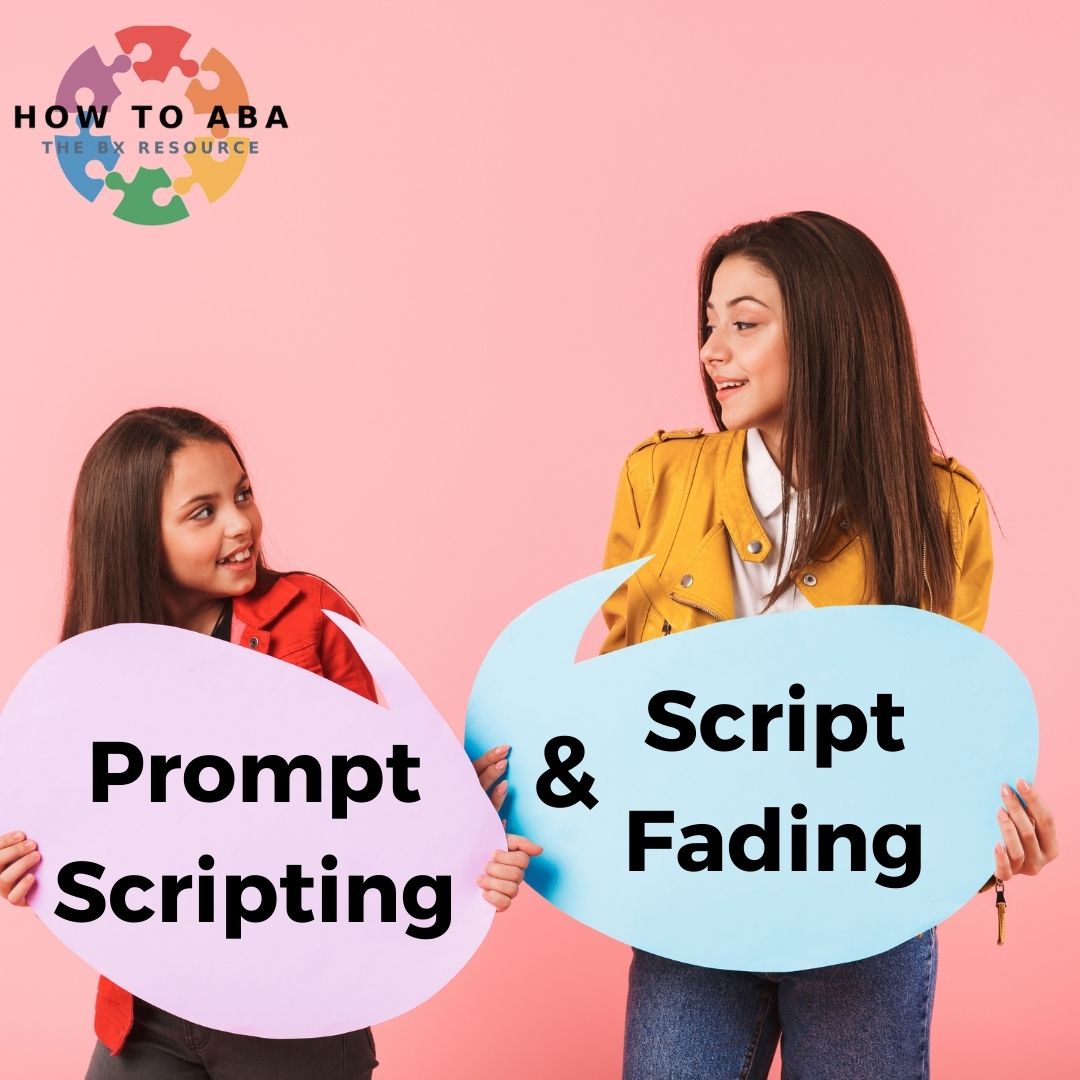
The first phone number I ever memorized as a child was my father’s business line. It was almost guaranteed that it was a number that would be answered no matter what time of day it was. When my sister and I went to daycare and school, went over to a friend’s house, or went out somewhere, it was essential that we knew how to contact our parents no matter what. How did we learn this number? My parents used a script, and we practiced it to fluency.
What is Prompt Scripting?
Prompt scripting is a method used to teach learners how to initiate conversations, respond to others, and continue an interaction with another person. Prompt scripting is not used to teach learners how to speak, but to teach social exchanges.
Watch how we use the Do You Like/What’s Your Favourite… conversation script in the Bx Resource!
Why Use Prompt Scripting?
When a script is taught, the learner is not only able to apply the script to the taught interaction; unscripted interactions can develop, previously learned scripts can be combined, and conversational skills can be generalized beyond the teaching environment.
How to Use Prompt Scripting
When teaching scripts, make sure to match the delivery of the script to the learners’ skill repertoire, interests, and the context in which the learner will be using the script. It is important to use language that is familiar and age-appropriate for the learner.
Since prompts are additional stimuli that are added to the teaching procedure, consideration should be given to stimuli that can be naturally occurring or embedded in the target context. If it is not possible to use naturally occurring stimuli, the instructor must plan for the prompts to be systematically faded to transfer control to the relevant stimuli in the environment.
As the instructor, appropriate language should be modeled (remember: not all language is vocal, consider the communication style of your learner), rather than repeating questions DTT-style. It is important to teach a learner that conversation is an exchange between partners, it is more than waiting for someone to ask a question then they provide a response.
Considerations About Scripts
Scripts may be single words, phrases, or picture cues, and can be presented as written prompts or audio recording.
Verbal models can be taught in-vivo, or pre-trained (eliminating verbal prompts in the natural environment can decrease the likelihood the instructor becomes the SD).
Audio scripts can also model appropriate tone, inflection, and volume.
Written scripts can be used in the natural environment (this also includes picture cues).
Scripts must be strategically presented within the learner’s environment to evoke initiations.
What is Script Fading?
Scripts are used to teach communication initiations and conversational responses, but the goal is for the learner to be successful with the least intrusive prompt possible. We use script fading procedures to reduce and eliminate the prompts and transfer control to the stimuli in the natural environment.
Why Use Script Fading?
As instructors, we systematically fade contrived prompts from the environment so that the learner does not become dependent on another individual. We want to fade prompts quickly, but not at the risk of losing the skill – refer to the data to identify a pace that is most beneficial to the learner.
How to Use Script Fading
When using a script fading procedure, typically prompts are faded back-to-front. This procedure can also be done for learners who are not reading text cues but use picture or echoic prompts instead.
For more information, check out this research (as well as the research listed in the references)!


